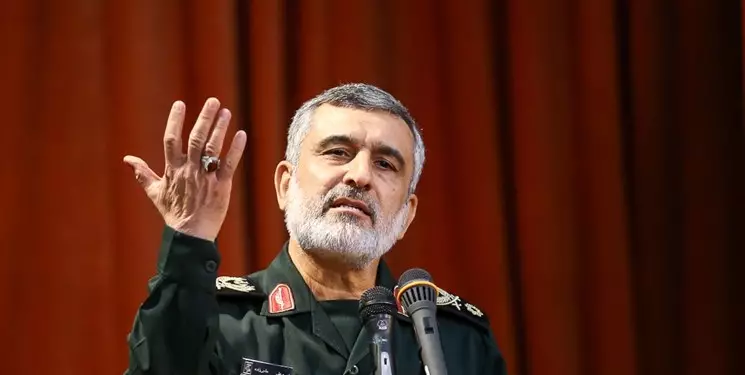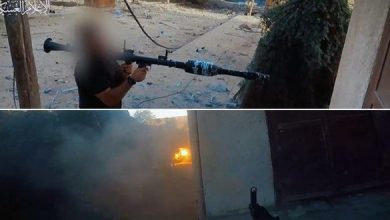IRGC Aerospace Commander: Iran’s Hypersonic Ballistic Missile Moves at Mach 12-13
Islamic Revolution Guards Corps (IRGC) Aerospace Commander Brigadier General Amir Ali Hajizadeh lauded the country's high capability in manufacturing various military equipment, and revealed that the home-made hypersonic ballistic missiles can fly at Mach 12-13 and enjoy advanced technologies to penetrate all types of air defense shields.

Speaking on Iran’s national TV, General Hajizadeh elaborated on the features of the country’s hypersonic missile manufactured late last year, and further also announced inclusion of a new cruise missile in the list of the IRGC’s military hardware.
“The hypersonic missile can travel at Mach 12-13 and is capable of exoatmospheric maneuvering,” he remarked, saying the projectile is outfitted with an engine that starts within 500 kilometers (310 miles) or a shorter distance of the target’s location to enable its maneuverability.
“The projectile cannot be destroyed by any of the enemy’s anti-missile systems,” Hajizadeh stated, adding, “I express confidently that the enemies will not be capable of developing a similar missile over many upcoming decades.”
Back in November, Iran announced that it has managed to develop cutting-edge hypersonic ballistic missile which is capable of penetrating advanced missile interception systems and hit the targets. Tehran declared that the ballistic missile, manufactured by Iranian experts, is very fast and able to maneuver both in the space and outer space.
Hajizadeh also announced “operationalization” of a new long-range cruise missile, codenamed Paveh, that can travel as far as 1,650 kilometers (1,025 miles).
“Our cruise missile with a range of 1,650 kilometers has been added to the missile arsenal of the Islamic Republic of Iran,” he continued.
The senior commander also stated that the country had managed to reduce the weight of its long-range missiles to one-fourth and the time needed for their preparation to a sixth.
Elsewhere in his remarks, Hajizadeh advised Europe not to test the Islamic Republic, saying the country has intentionally capped the range of its missiles “out of respect” for the continent.
He further reminded that his force is “capable of targeting American aircraft carriers at a 2,000-kilometer (1242-miles) distance”.
“Of course, we have [voluntarily] kept the distance [that can be reached by our missiles] at 2,000 kilometers out of respect for the Europeans,” the IRGC commander underscored, adding, “We hope [then] that the Europeans [too] would preserve their dignity.”
He also cautioned that “the United States’ benefit lies in creating regional insecurity”.
Gen. Hajizadeh considered the US to be the root cause of several global conflicts, including the war in Ukraine and the dispute that the West has been trying to create concerning China’s sovereignty over Chinese Taipei.
Returning to the issue of regional stability, the top commander noted that “the region sits on a security fault line,” citing the history of the past four decades’ conflicts.
“If we fail to be strong, the enemy will bring the war inside Iran,” he, therefore, urged, advising, “We should be very careful in order to be able to meet the security needs of our dear nation and country.”
The senior commander, however, hailed that the IRGC had always been aiming to render the American war machine ineffective, and had, accordingly, managed to bring all of the US’s regional bases within the range of its defensive firepower.
Washington’s bases in the region “have [thus] turned into the Americans’ weak spot,” he said, adding that the IRGC can strike the US outposts “whenever the need arises.”
The Islamic Republic’s military doctrine holds that the country’s armed capability solely serves defensive purposes.
Military comanders say Iran stands among the world’s top states manufacturing drones and precision-striking missiles, and add different types of domestically-built military equipment are favored by world powers.
Iranian military experts and technicians have in recent years made substantial headway in manufacturing a broad range of indigenous equipment, making the armed forces self-sufficient in the weaponry sphere.
Iranian officials have repeatedly stressed that the country will not hesitate to boost its military capabilities, including its missile and drone power, which are entirely meant for defense, and that Iran’s defense capabilities will never be subject to negotiation.




